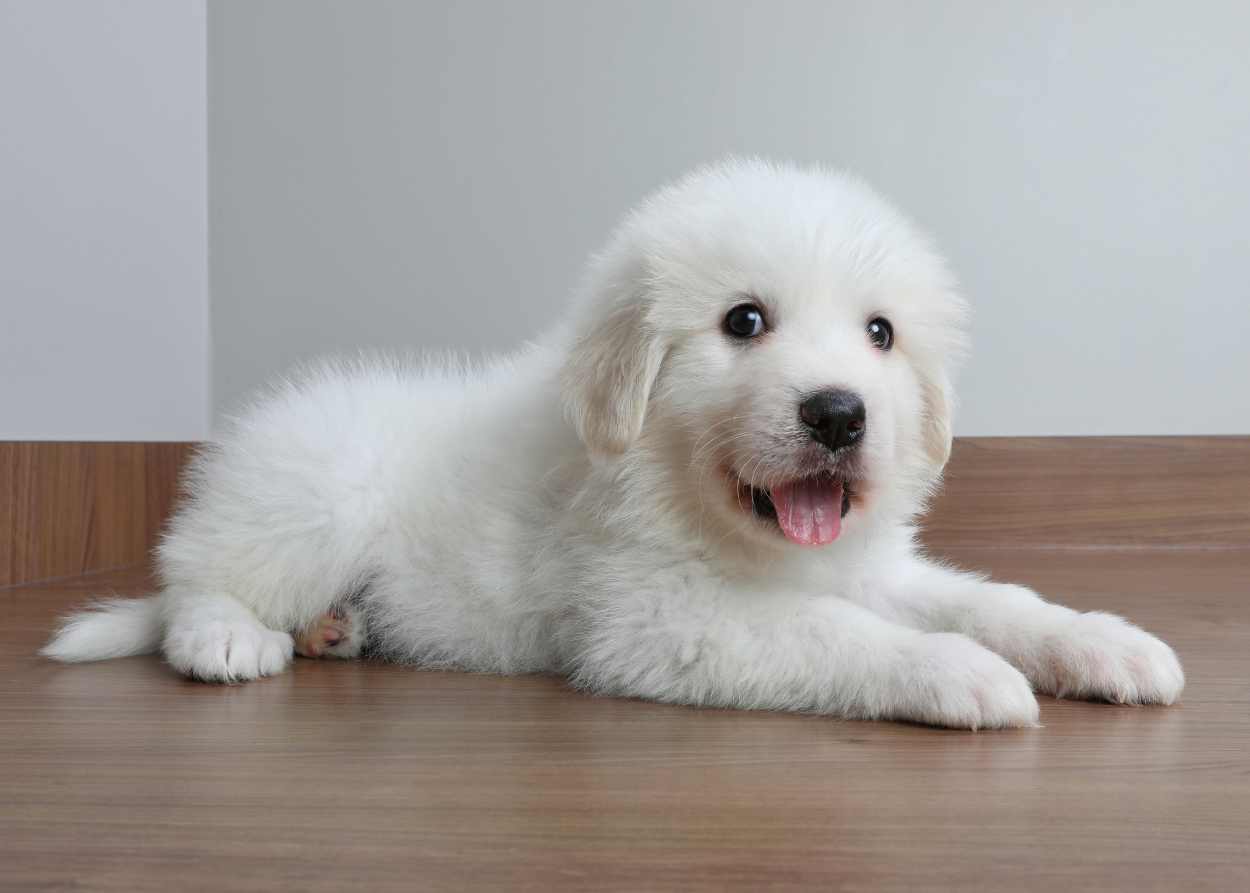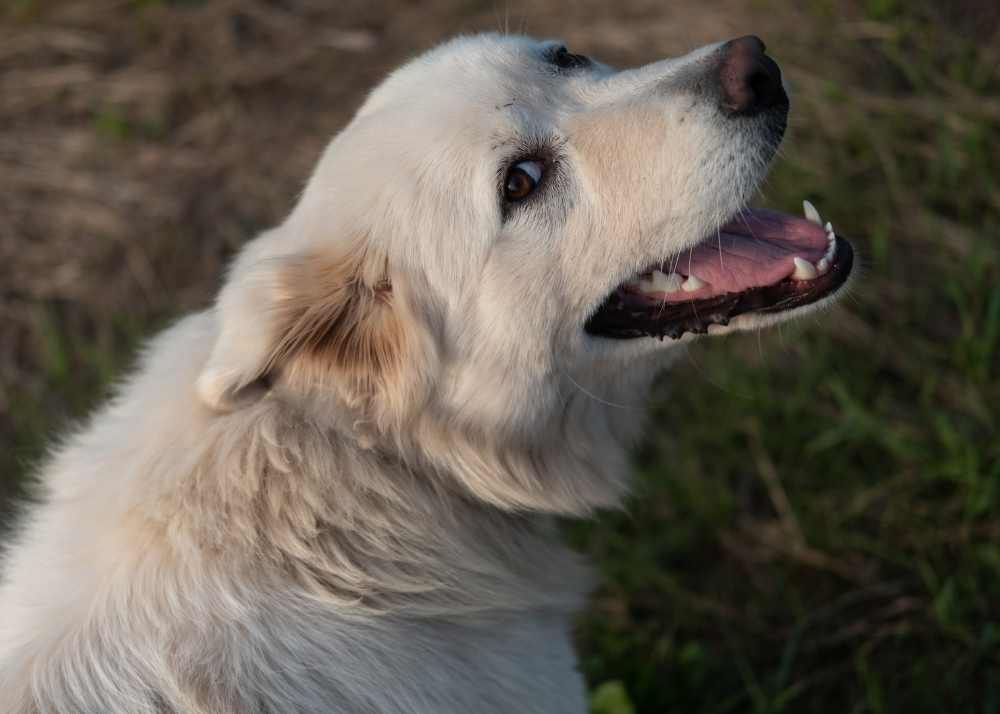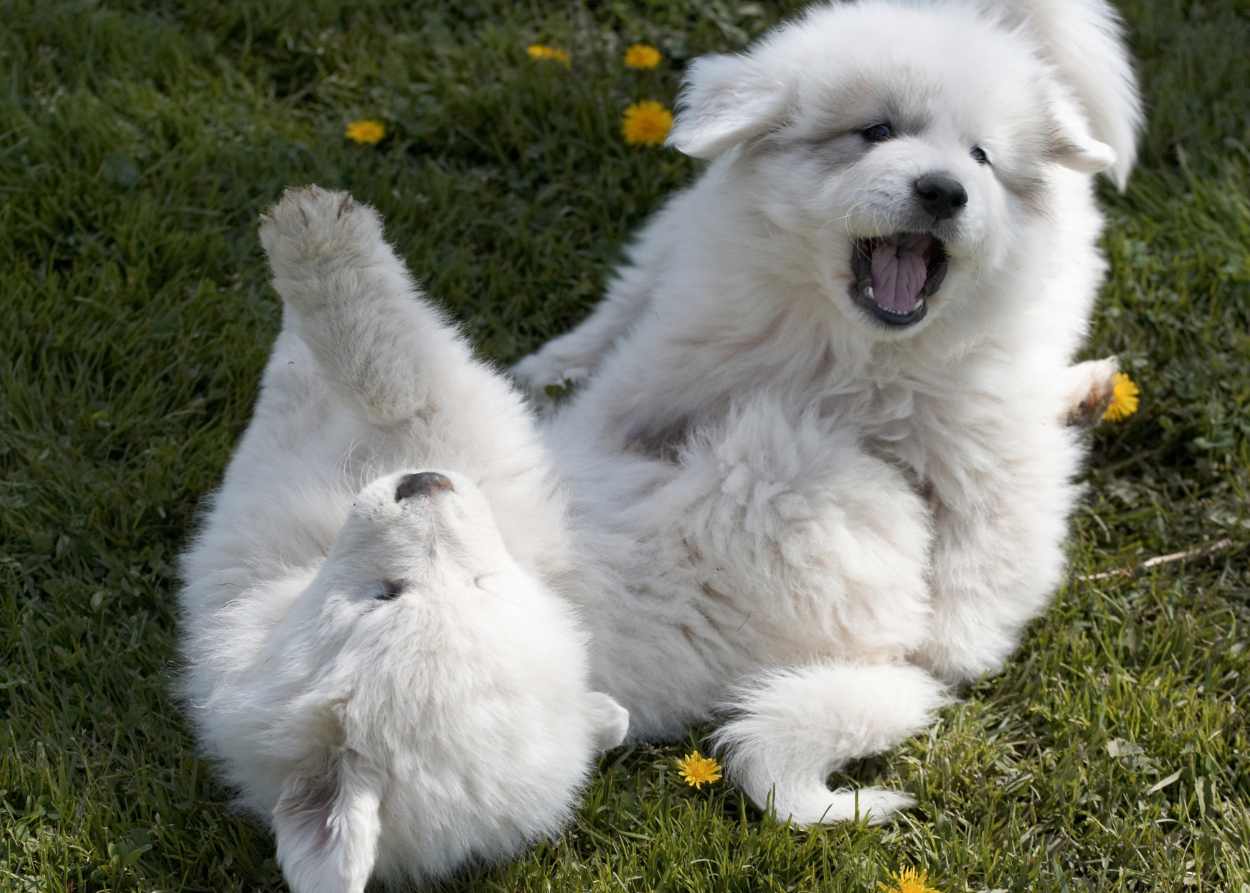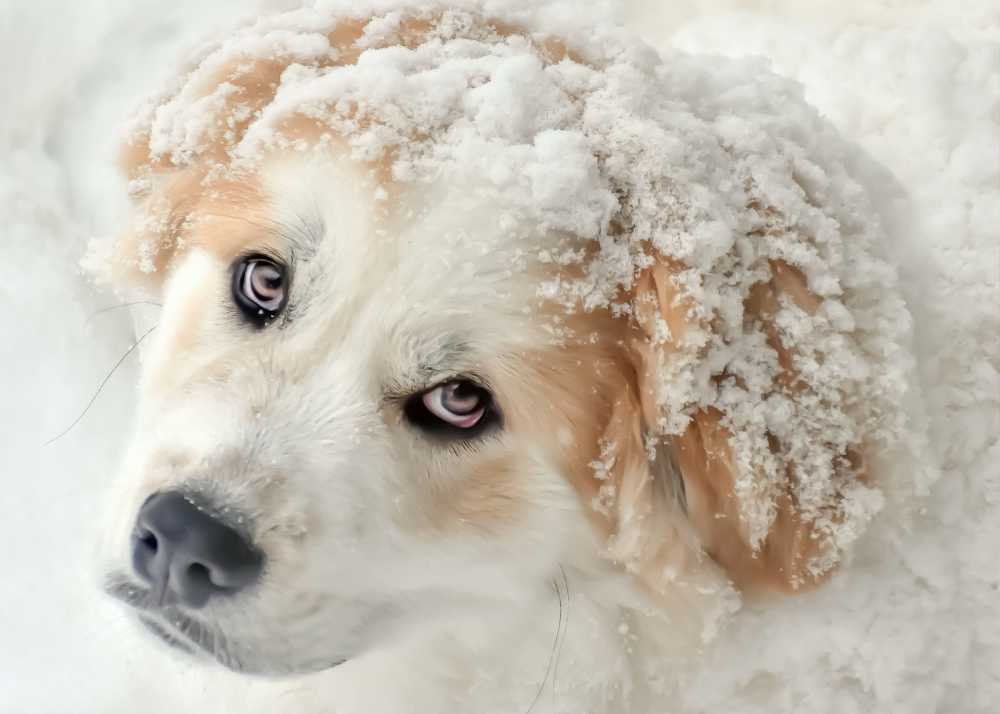Is that a baby polar bear rolling around in the snow? No, it’s a Great Pyrenees!
A Great Pyrenees dog is a massive, white gentle giant with a stunning appearance, dignified demeanor, and a heart of gold. They are strikingly beautiful dogs with thick, soft, fluffy white double coats. They truly look like baby polar bears from afar with their all-white coats and sheer size.
Great Pyrenees puppies are named after the Pyrenees Mountain Range in southwestern Europe between Spain and France. They also go by Pyrenean Mountain Dogs in the UK and Le Chien de Montagne des Pyrenees or Le Chien des Pyrenees in France.
Enamored with their teddy bear/polar bear stuffed animal looks, new puppy owners might assume these dogs will grow up to be like a larger, white-colored Golden Retriever, but this is a completely different breed. Great Pyrenees puppies need owners who truly understand what makes this breed tick for a harmonious life with these majestic dogs.
These huge guardian dogs are more than just their fluffy white appearance and stoic demeanor. But what makes a Great Pyrenees so great after all?
Find out what it’s like to live with Great Pyrenees puppies in our comprehensive puppy ownership guide to see if this dog breed is right for you.
History and Origin of Great Pyrenees Puppies
As members of the working class, Great Pyrenees dogs have helped shepherds and peasants tend to livestock and guard flocks from predators on steep, treacherous slopes for centuries.
Although the exact year is not known, it is thought that Great Pyrenees descended from white dogs around 3000 BCE. Pyrenees breed remains have been found in Bronze Age-era fossil deposits from 1800-1000 BCE. The Basque people and other indigenous people adapted these dogs to help with their pastoral lifestyle.
The isolated mountain ranges along with a lack of interbreeding allowed the Great Pyrenees to flourish as its own breed. One of the first accounts of a Great Pyrenees was in French literature in 1407 where they were lauded for their usefulness as “Great Dogs of the Mountains” and as guardians of the Chateau of Lourdes.
Bloodlines and breed assistance
While Great Pyrenees were not influenced by other breeds, they did contribute to a few different breeds’ genetic pools. St. Bernards were in danger of extinction, and Great Pyrenees bloodlines were used to build up the breed until they flourished on their own. Basque fishermen migrated to Newfoundland in the 1600s, where Great Pyrenees mated with the black curly-coated retrievers. This mix resulted in the Landseer Newfoundland, a long-legged black and white dog with a dense coat.
Popularity of Great Pyrenees Dogs
Also in the 1600s, Great Pyrenees left the isolated regions to become a beloved French symbol. The Dauphin of King Louis XIV took a liking to Great Pyrenees and were named the Royal Dog of France in 1675, causing them to become popular with the nobility. Queen Victoria also found favor with Great Pyrenees dogs, showing them at the Crystal Palace 1885-86.
Mary Crane pictured with Basquaerie dogs and Professor Will Monroe, First President of the Great Pyrenees Club of America, 1933, courtesy of ShowSight
However, the breed was facing extinction thanks to the lack of natural predators run off from the mountains by human development and the effects of World War I. A few dedicated breeders worked hard to have the breed officially recognized in 1927, nearly solely responsible for their perseverance through German occupation in World War II.
Great Pyrenees arrived in America in the early 1930s and can attribute their stronghold in American culture thanks to one kennel in Massachusetts. Mary Crane worked tirelessly to document litters and pedigrees and promote the breed. Today, several clubs and organizations exist to preserve the breed standard and spread appreciation for these incredible white dogs.
Today, Great Pyrenees dogs are still used as livestock guardians for ranchers and farmers. They also put their working history into being therapy dogs thanks to their calm demeanors. As a versatile dog breed, many households enjoy their companionship and loyalty as beloved house pets.
Although not as much as other dog breeds, Great Pyrenees have enjoyed the spotlight in popular culture. A popular anime series called Belle and Sebastian is based on a French novel and features a Great Pyrenees as a companion to a little boy with a rough life. Elvis Presley owned a beloved Great Pyrenees named Muffin along with several other dogs. The children’s movie Santa Buddies also featured a Great Pyrenees starring as Santa Paws, a perfect choice for a snow-loving dog.
What’s it Like to be a Great Pyrenees Puppy Owner?
In order to thrive, Great Pyrenees puppies need a certain type of lifestyle and household. Their quirks combined with their loyalty and calm demeanor make Great Pyrenees cherished companions for those who appreciate their unique personalities.
Appearance
Great Pyrenees puppies will grow up to be gentle giants, weighing 85-100+ lbs. and standing 25-32 in. tall. Underneath all that magnificent hair is a strong, muscular body. Their blocky heads have rounded v-shaped ears that fold over and black noses and lips. Great Pyrenees have a broad chest and powerful hind legs. Their tails are bushy and love to wag when they see you, so watch those cups and mugs on your coffee table!
Coat colors
Some people may assume all Great Pyrenees are pure white. However, Great Pyrenees puppies can have reddish brown, tan, badger, or gray markings for an array of slight variations in the breed.
Personality
Great Pyrenees are loyal companions completely devoted to their owners. While Great Pyrenees puppies are lively and love to play, their personality will mellow out. These dogs are kind and patient and take their protector role seriously.
Great Pyrenees are exceptionally devoted to their families. However, don’t expect them to be as cuddly and snuggly all the time even though they may look like teddy bears or polar bear cubs. Great Pyrenees can be independent and somewhat aloof. They most likely will not try to climb up in your lap like other large dogs that think they are small dogs!
Excellent nanny dogs
Great Pyrenees have a special soft spot for children. Great Pyrenees dogs view children as vulnerable family members who need protection. They are sometimes called “nanny dogs” due to their gentle, watchful nature when kids are around.
Chilly Willies
Great Pyrenees puppies love frigid temperatures and are one of the best cold-weather dog breeds for cold climates. You’ll find them lying down just chilling (literally) in the snow as if it were a comfy dog bed. Even if your Great Pyrenees puppy loves being out in the cold, you always need to follow cold weather safety for dogs to ensure their well-being while also honoring their instincts to romp around in snow drifts.
Activity level
Most people might assume larger dogs are not as athletic. However, Great Pyrenees are quite fast dogs even though they can seem lazy at home. These fluffy companions will need about 30-45 minutes an hour of both physical activity and mental stimulation to thrive. They enjoy exploring large, open, secure spaces, walking around the neighborhood, games, solving puzzles, and interacting with toys to keep their minds sharp.
Thanks to their membership in the working dog group, Great Pyrenees dogs do best when given a “job” to do, even if it’s just protecting the cat (which they get along with surprisingly well) or children in the house.
Training Great Pyrenees Puppies
Patience and consistency are key when training a Great Pyrenees puppy. As we mentioned earlier, you may be expecting the eager-to-please nature of dogs that share similar, smaller features such as an English Cream Golden Retriever. However, you’ll soon learn that Great Pyrenees are as concerned with pleasing you and like to trot to the beat of their own doggy drum. Great Pyrenees can be willful and stubborn, but they’re not out to “get you.” They know the commands and hear you, but they may do as they please in their own time! You might get exasperated, but one look at their cute faces and a hug around their fluffy necks will melt your heart.
You’ll want to start potty training and proper puppy manners right away so they can develop into good canine citizens. Because they are so strong, leash training is a must so you can control them when out and about.
Having a positive, upbeat attitude is crucial, especially when experiencing setbacks. All your hard work will pay off when you are the owner of a well-adjusted, mild-mannered Great Pyrenees adult dog that is a joy to be around.
Roaming around
Great Pyrenees puppies need an incredible amount of space to roam. They are not suited for apartment life. If they escape they’ll cover a lot of ground in a short amount of time. You may see these dogs wander onto neighbors’ properties in rural areas. It’s a must to microchip your Great Pyrenees puppy in case they do get out of their secured enclosed space.
Barking
Because they are guard dogs, it’s hardwired into their nature for Great Pyrenees puppies to alert you to something amiss. While they will not bite, their bark is deep and loud enough to ward off potential predators, even if wolves are not present like back in their alpine days. It’s important to train and socialize them from Day One to expose them to different sounds and situations so they are not so reactive to new experiences.
Grooming and Coat Care of Great Pyrenees Puppies
The magnificent coats of Great Pyrenees puppies are not just for looks. It serves as a perfect camouflage hidden in snowy terrain to hide from predators looking for tasty livestock like sheep or goats.
While grooming a Great Pyrenees is not difficult, it can still take some time for regular maintenance. One great aspect about the coat of a Great Pyrenees is that it’s designed to be self-cleaning and tangle and mat-resistant. The double coat features a coarse, water-resistant outer layer and a soft, downy inner layer.
Some puppy owners may assume a Great Pyrenees will get hot with such a bushy coat. However, the opposite is true – you could damage their ability to regulate their body temperatures. Never shave a double-coated dog. Shaving removes the two layers that work together to regulate your Great Pyrenees puppy’s temperature. Their outer and inner layers trap cool or hot air just like an air conditioner or heater does. Removing these layers gives them no defense and will make them more uncomfortable.
You’ll need a few products to manage dog hair when living with Great Pyrenees puppies, as they are heavy shedders! Be prepared for white tumbleweeds everywhere, purchase a quality vacuum, and stash lint rollers in every room of the house, in your car, and at work! Regardless of whether you do DIY dog grooming at home or go to a professional groomer, these dogs’ coats will need maintenance at least every other day. You’ll need an undercoat rake, pin brush, and a stainless steel wide-toothed comb when brushing your Great Pyrenees puppy.
Even though the coat generally takes care of itself, their white coats can quickly turn various shades when caked mud, grass stains, dirt, and who knows what else still stuck to their fur. They may appear clean, but brushing them a few times a week will help redistribute oils and remove lingering dirt and debris.
When bathing a Great Pyrenees puppy, you might not even have a big enough space! Whether you do it yourself or get help, be sure to use a deshedding shampoo and conditioner and work it into their fur for a thorough bath. Be sure to use a guard drain so all that hair doesn’t clog your pipes!
Use your grooming routine as an opportunity to conduct a thorough skin check, looking for lumps, bumps, skin infections, eye or ear problems, ticks, or any other things you can catch with a body inspection. Trimming nails, dog paw care, and canine dental care are also aspects that should be a regular part of your grooming and care routine.
Health concerns of Great Pyrenees
The Great Pyrenees dog breed is a relatively healthy one. They enjoy 10-12 years with you as their favorite companion. Regular trips to the veterinarian and keeping your Great Pyrenees puppy up to date on vaccinations will prolong their life and prevent health issues.
Because they are large dogs, they are slow to mature to adulthood. It takes 19-24 months for their bones to fully form. For this reason, strenuous exercise should be avoided until their bodies are done growing.
However, there are concerns potential Great Pyrenees puppy owners should be aware of to know how to prevent or treat these issues that may arise.
- Hip and elbow dysplasia: A genetic disease where hips and elbows grow deformities that cause pain in a dog’s joints. It can be treated with medication or surgery.
- Bloat: Formally known as gastric dilation and volvulus (GDV) in dogs, bloat is when the stomach fills up with gas and can twist on itself, causing life-threatening complications. Bloat requires immediate emergency surgery, and further surgeries can be done to help prevent future twisting.
- Neuronal Degeneration (NGD): Degenerative changes to the entire nervous system in the brain, peripheral nerves, and spinal cord are caused by this inherited disease. Genetic testing can detect the presence of neuronal degeneration.
Where Can I Find Great Pyrenees Puppies?
Are you convinced the Great Pyrenees is the dog breed for you? Great! Now it’s time to find your very own Great Pyrenees puppy.
Because these dogs are so impressive and majestic, you may find lots of search results on social media sites or message boards that catch your eye. You must be vigilant and do your due diligence when you encounter these posts and ads. How can you trust you’re really getting a healthy, happy Great Pyrenees puppy?
Pawrade offers Great Pyrenees puppies
Pawrade is a pet adoption service matching reputable breeders with potential Great Pyrenees puppy owners like you. We screen and hand-select breeder partners who put the well-being of puppies first.
Each puppy comes with a 3-year health guarantee, 30 days of MetLife insurance, a puppy contract, and health records. You don’t have to worry about being scammed at Pawrade. We utilize a secure platform transaction management system called PetPay, where you will never be asked for cash, a money transfer, or unsecured apps like Zelle.
Testimonials from our happy customers will tug at your heartstrings and give you a sense of what to expect when you choose us to find your new furbaby.
Won’t you join Great Pyrenees puppy owners with a fluffy white gentle giant of your own? Browse our Great Pyrenees puppies for sale to find your baby polar bear look-alike. We can’t wait to work with you!








